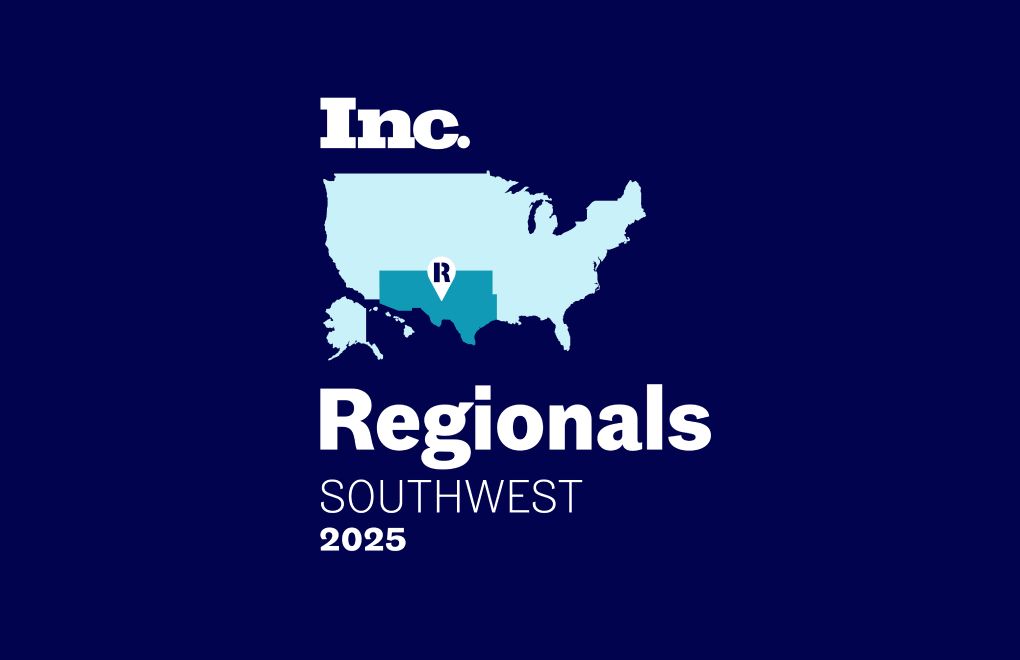‘Tis the season for being in the store. From back-to-school to Christmas, the holiday season drives foot traffic (and spending) in brick-and-mortar stores.
Fall through Christmas is a busy time of year for grocery stores as people prepare for food-focused gatherings, which makes Food and Beverage the second largest holiday spending category in the U.S.
Brands looking to reach their audience while they’re out and about have the opportunity to make an impact where, according to eMarketer, 80% of holiday purchases are expected to occur–in brick-and-mortar stores.
So, how can brands take full advantage of in-store advertising during the fall holidays? In this article, we’ll talk about how you can incorporate grocery store advertising into your holiday marketing campaigns to drive results, whether your products are sold directly in grocery stores or outside the four walls. We’ll give you examples of how brands are reaching their audiences in grocery stores, and we’ll also provide some insight into shopper behavior and habits this season.
What is In-Store Retail Media?
Before we dive into how to best position your brand for success during the holiday season, let’s first clarify what in-store retail media is.
In-store retail media networks use digital signage in retail environments, like grocery stores, to deliver informed and targeted marketing campaigns. In-store retail media combines the mass reach of TV advertising, the audience targeting of digital advertising, and the stopping power of out-of-home advertising.
For these reasons and more, the numbers point to the store becoming an increasingly important part of the retail media landscape in the coming years, with eMarketer predicting in-store retail media spend to increase by 46.5% from 2023 to 2024 and represent over $1 billion in spend by 2028.
There are a number of different types of in-store retail media formats from kiosks to TV screens that allow brands to target their audience in brick-and-mortar stores, where 85% of all sales and 94% of grocery sales occur. Here’s an example:
A brand interested in grocery store advertising might, for instance, run their video advertisement on an in-store retail media network spanning multiple grocery retailers in several DMAs. They could launch this campaign through a major DSP like The Trade Desk or directly through the in-store retail media network.
The video captures the attention of shoppers waiting in line or actively perusing the aisles of the store. If the brand is interested in understanding the full impact of the campaign, they might conduct a brand lift study to determine the percentage increase in shoppers aware of their brand using a set of test and control stores.
Fall Holiday Season is In-Store Advertising Season
While the store's reach is consistently strong throughout the year, specific hours, days of the week, and holidays see bumps in foot traffic.
Increase in Foot Traffic in the Fall
The fall season is the biggest season for foot traffic in grocery stores. The fall season includes heavy-hitters like:
- Back-to-school
- Halloween
- Thanksgiving
- Christmas
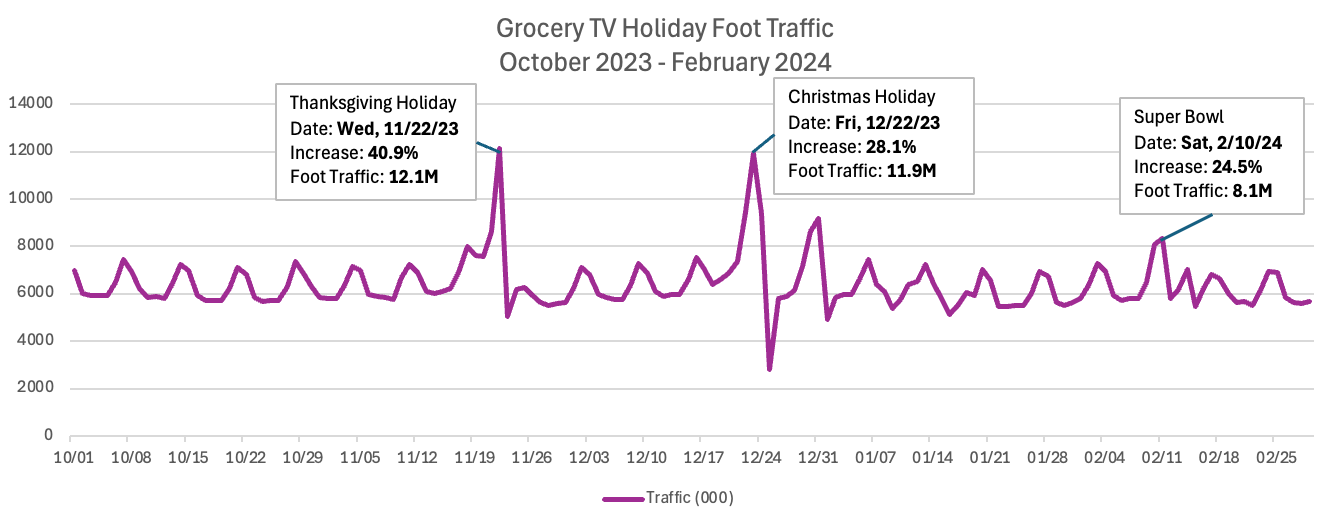
Typically, foot traffic starts to build a few days before a major holiday. We recommend brands start advertising at least a few weeks ahead of the holiday to increase the odds that they are top of mind or on the shopping list when the main event hits. Brands have the opportunity to tailor their creative to the mindset of the shopper at different points in the lifecycle of a major holiday (discovery/inspiration leading up to the holiday vs. purchase in the days before the holiday).
Shoppers are More Receptive & Attentive to In-Store Media
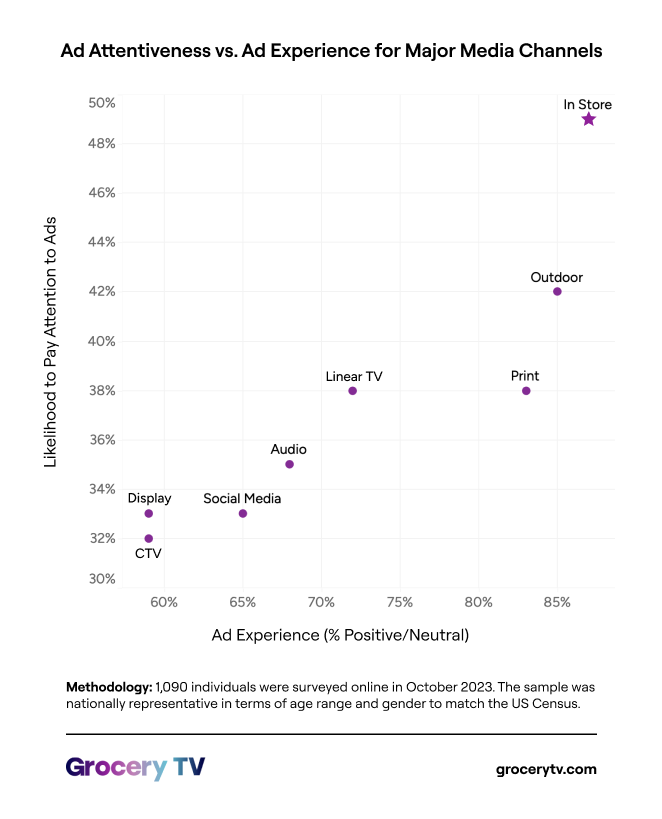
It may not come as a surprise that people are more open to advertising in an environment where they intend to make a purchase.
Research has shown that people are more receptive and attentive to advertising formats that don’t disrupt the audience’s experience.
What’s more, in-store advertising tends to make a more profound impact on shoppers than other channels. 87% of consumers, in one survey, indicated that they feel receptive and positive toward in-store advertising. During a time of year when consumers are faced with advertisements nearly everywhere they turn, brands that can stand out using in-store advertising–and reach people when they’re actually paying attention or are receptive to those ads–can rise to the top.
Grocery Shoppers also Cross-Shop in Other Businesses
The impact of advertising in a supermarket extends beyond the four walls of the store. The same person who visits a supermarket, on average, 7 times a month will also visit nearby businesses, and other retail locations like electronics stores, quick-service restaurants, or big-box stores. In fact, we know from Placer.ai data that 68% of Grocery TV’s audience will also visit a Walmart within a 90 day window. Because of this, retail brands outside of the grocery store can also leverage this touchpoint to drive foot traffic from holiday shoppers.

Grocery Shoppers are Everywhere
Virtually everyone goes to the grocery store at least once in a while. Brick-and-mortar grocery stores offer brands a unique opportunity to target any audience they’d like in the highest-trafficked retail environment.
With the power of Grocery TV’s in-store retail media network, brands can segment audiences by demographic, shopping behaviors, and more, then deliver tailored advertisements.
What’s more, those who shop at grocery stores most often also tend to be those whose perceptions of brands and products are most crucial. The in-store audience also influences other household purchase decisions. That means that the people reached by supermarket advertising are also responsible for making other household purchase decisions such as insurance, credit cards, and automobiles.
Fall Holidays Affect Purchase Behavior
Certain product categories depend on the huge boost that they get from specific holidays. This year, for example (according to The Numerator Holiday Trends Consumer Study 2024):
- 79% of US consumers plan to buy candy for Halloween
- 72% of consumers plan on buying gifts before Christmas
- 81% of US consumers will buy food for Thanksgiving
How Brands Can Leverage In-Store Retail Media Over the Fall Holiday Season
Almost 50% of media impact comes from the quality of the creative that you use. Especially in a colorful and eye-grabbing grocery store environment, you want your brand’s creative to stand out. You can ensure the effectiveness and quality or your creative by:
- Using clear, concise text to send a message early on in your creative
- Including your brand’s logo featured prominently during the whole ad, so that people know who it is coming from, regardless of when they start watching
- Using imagery that evokes an emotion or creates a need
- Creating contextual creative that fits in the environment around it (recent estimates show contextual advertising to be 32% more effective than demographic targeting)
- Using videos and movement to really grab passerby’s attention
- Using existing creative, repurposed for in-store retail advertising
Here are some examples of how brands use the above tips to make the most of the Grocery TV media network:
Native Content Opportunities

In between advertising and retail content, we run GTV-produced entertainment content. This keeps shoppers engaged especially in areas of the store like the check out and pharmacy where dwell times are higher.
For brands looking for a more contextual or natural way to get their brand in front of shoppers, native content allows them to embed their products, services, and brand into entertaining trivia, cooking tips, or recipe videos. The above example demonstrates how an orange juice brand could offer shoppers a recipe to make gingerbread house icing and include their own product in the recipe.
By running seasonal native content, brands have the opportunity to delight shoppers and enhance their in-store experience while imbuing their brand in their weekly routine.
Contextual Advertising Suited for Fall
Brands can always benefit from considering the context in which their advertisements will be viewed, but this may be particularly true during a peak time like the fall holiday season. There are two goals to aim for when considering contextual advertising:
- The messaging incorporates the grocery environment
- Messaging is tailored to specific store areas
For instance, a candy company might display a map of where their candy bars can be found in the store near its entrance. Then, at the checkout, they may run creative that says something like “Need a snack while you wait?” to tailor the advertisement to the in-store environment.
Weather and climate–cold days, snow, rain, longer nights, etc.– are also important contextual factors to consider during the fall. Brands can even take things to the next level with weather-based dynamic ads.
Grocery TV can detect the weather outside and use that information to choose which version of an advertisement to share. Brands make different creatives that are tailored to different climates, and Grocery TV uses input from The Weather Channel to know which ad would be best received according to the local weather.
This ad from Stella Artois uses graphics or a ski slope to bring about a craving for a glass of the Belgian beer with its snow-like foam.
Advertise Using Holiday Traditions
Many of the people in grocery stores around the holiday season are in the store looking for something particular– and that “something particular” is usually related to the holidays. If you incorporate this knowledge into your advertising campaigns, then shoppers are more likely to feel related to the content and interested in its subject matter. You don’t have to be selling candy around Halloween to relate directly to the people who are in the store to buy candy.
For example, Chase made this advertisement targeted toward the 81% of US consumers buying food for Thanksgiving:
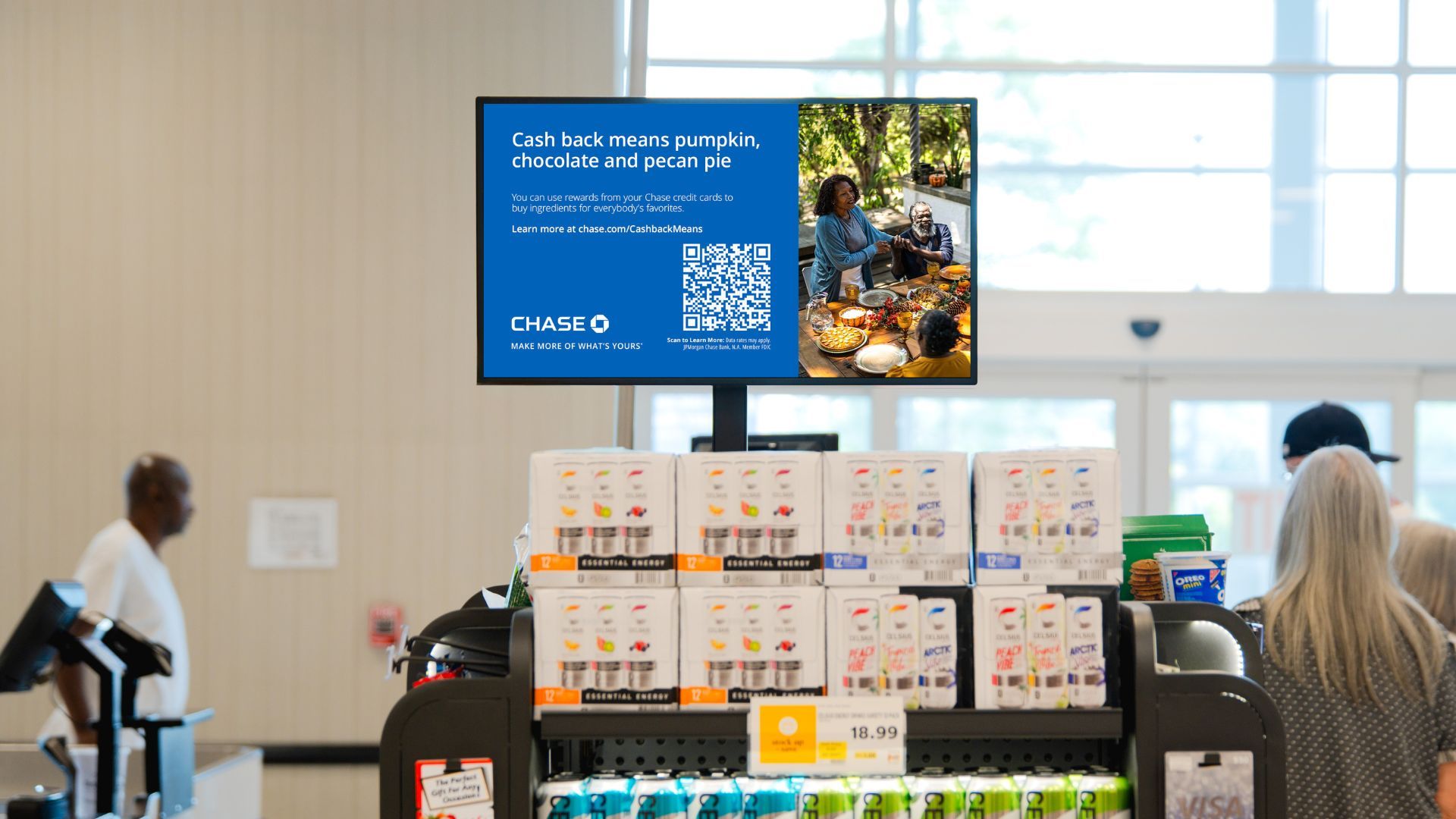
Venmo used this ad campaign to appeal to grocery shoppers who may wonder about what gifts to get their family members for Christmas.
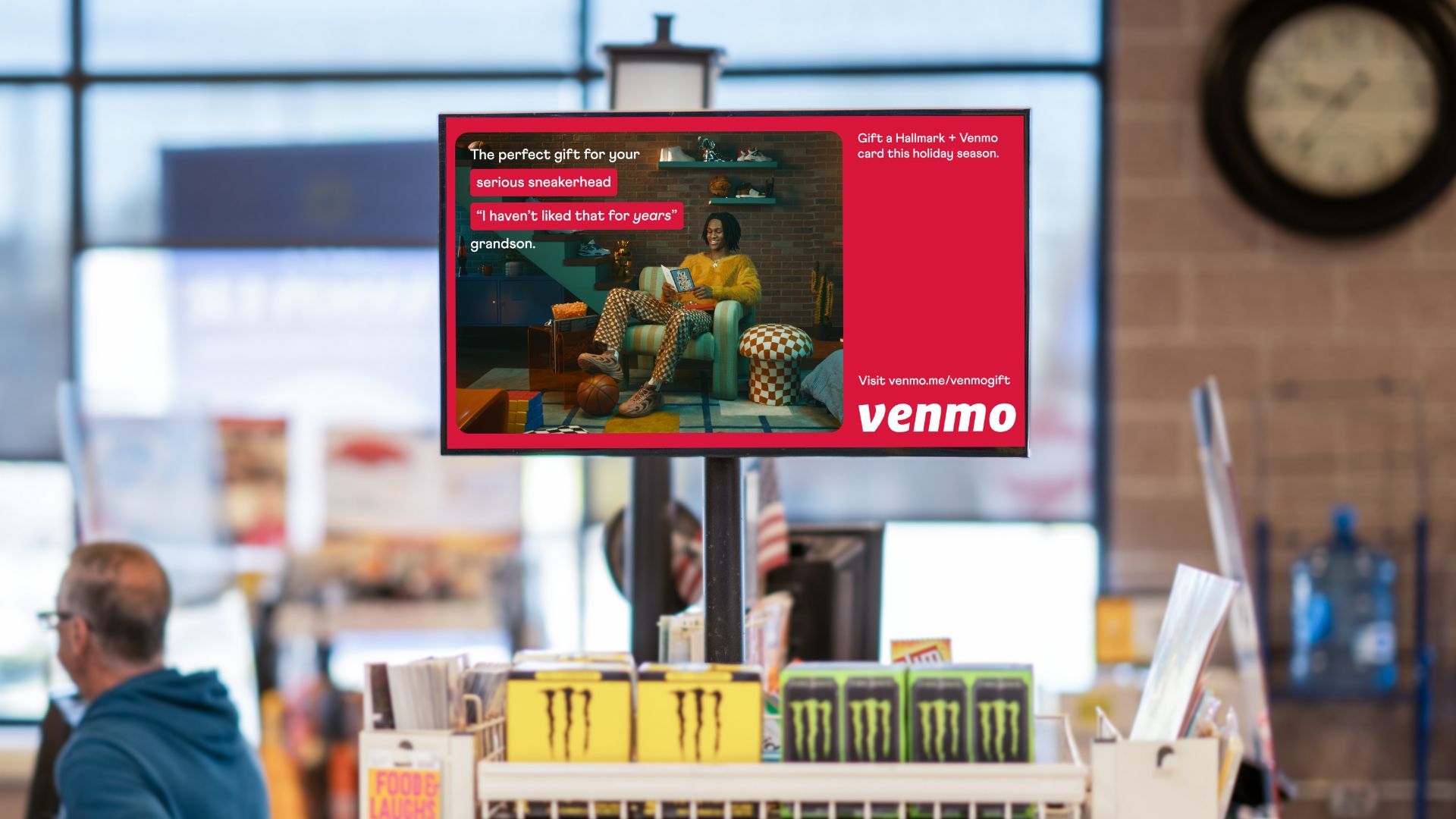
People buying and receiving new phones for Christmas will also need new phone networks. Verizon tailored their advertising creative to the holiday season, while pointing out that they are the #1 network in the local area.
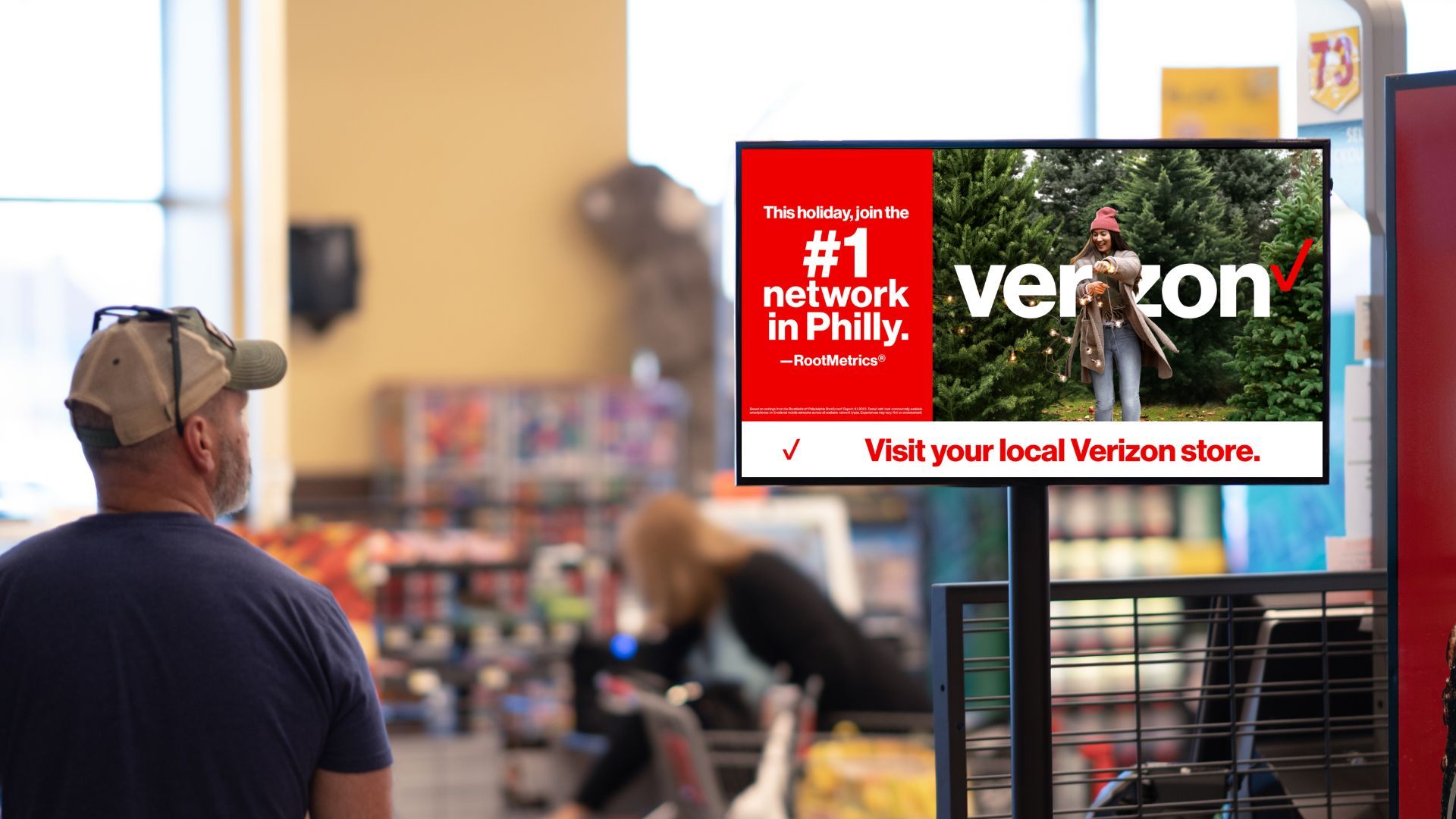
Again, you’ll notice that none of those three brands have products that are directly sold in grocery stores, but they all used the feeling of holiday cheer to get the attention of store-goers who, statistically, cross-shop and influence all other household purchases.
Key Takeaways
- The fall season represents "primetime" in stores as shoppers increase visitation around major holidays.
- The majority of purchases still occur in brick-and-mortar stores, highlighting the importance of this channel in driving conversion.
- The people who visit grocery stores have influence over all household purchases, and they cross-shop in other businesses.
- Shoppers like in-store media. It’s non-invasive, interesting, and fun.
- To further engage shoppers, brands can partner with GTV to produce native content such as recipes, fun facts, and trivia.
- Brands can also use dynamic triggers like weather to further tailor their in-store creative.




![[Report] In-Store Retail Media: The Key to Driving Incremental Reach for Brands](/content/images/2025/05/GTV-Incremental-Study-1.jpg)
